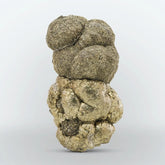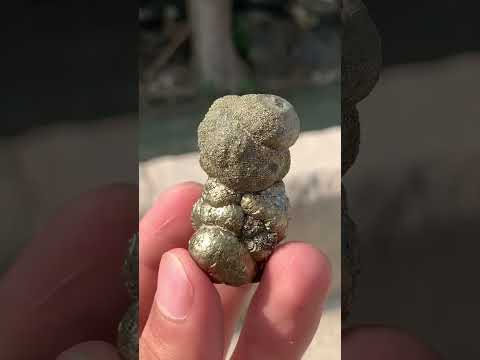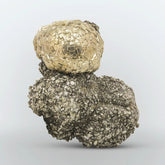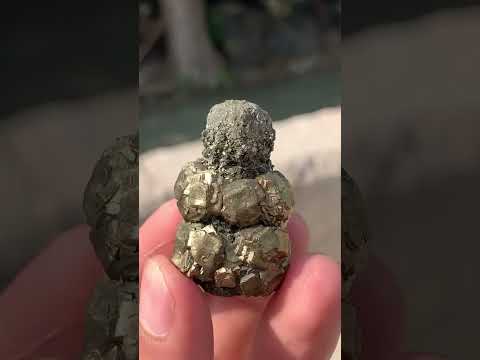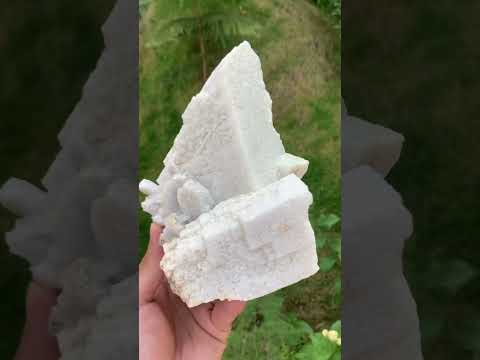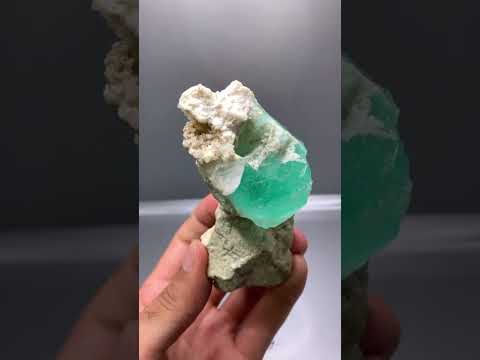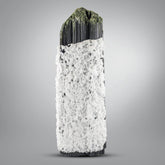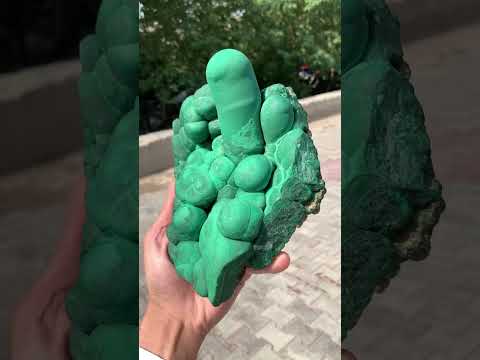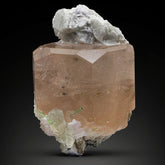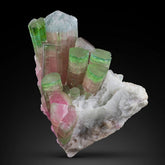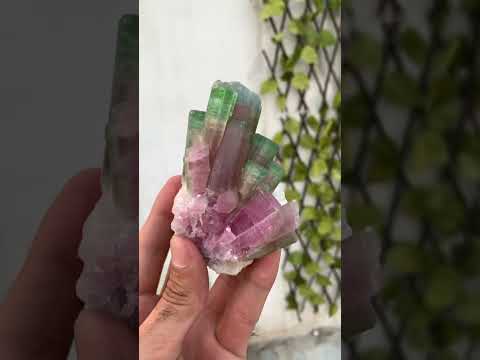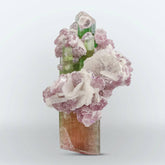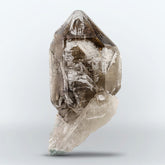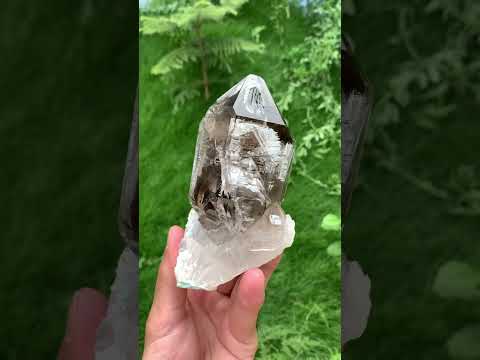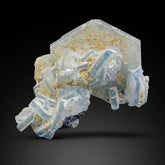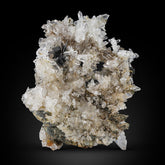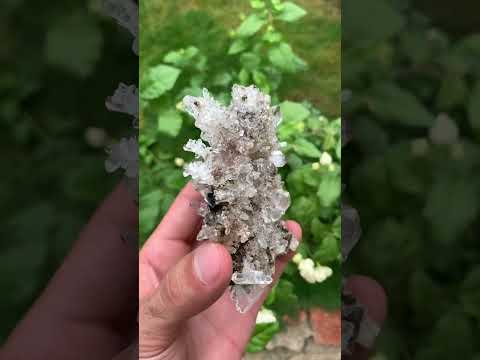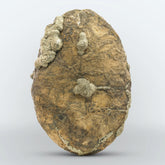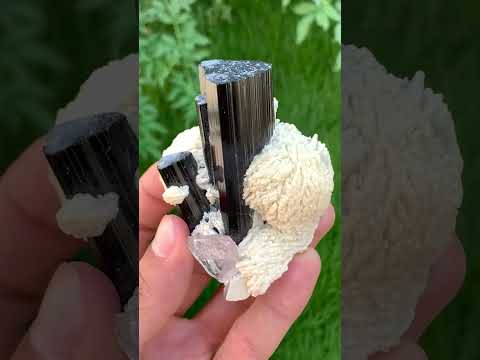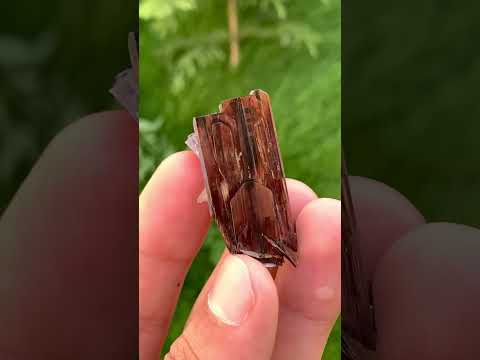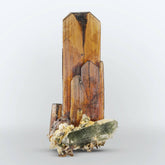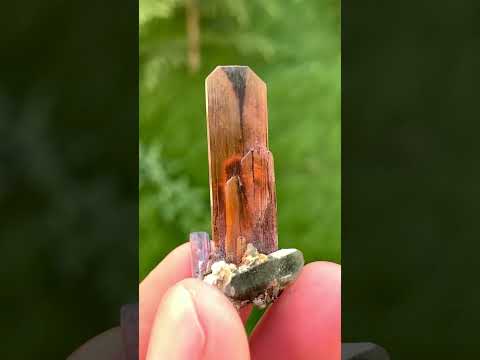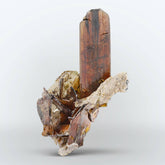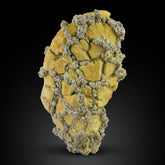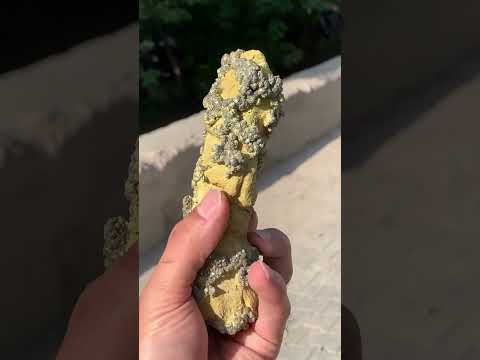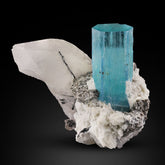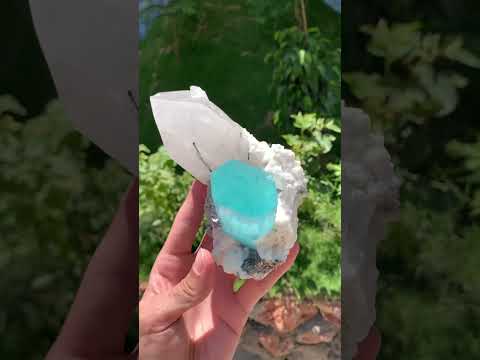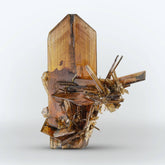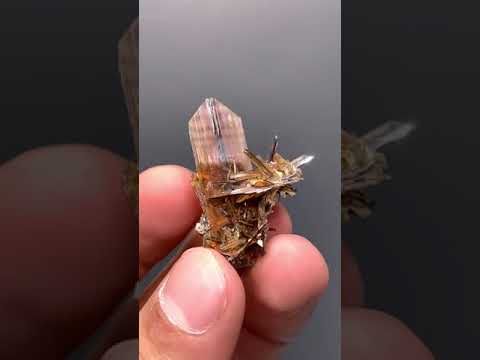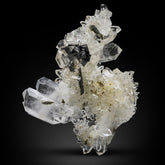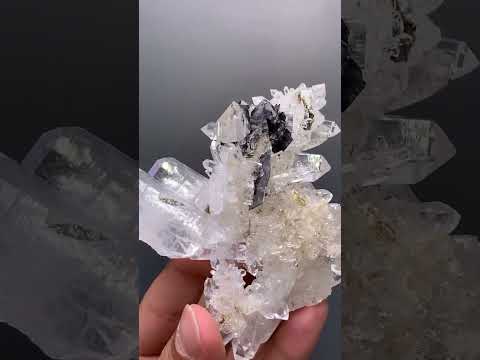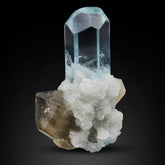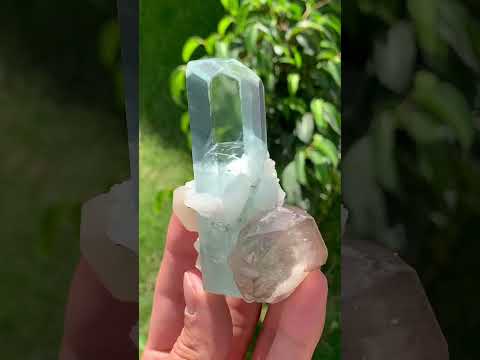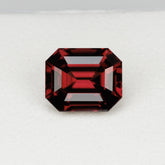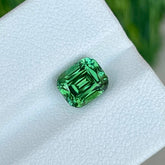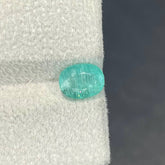Filter
1645 results
30
- 10
- 15
- 20
- 25
- 30
- 50
Date, new to old
- Featured
- Best selling
- Alphabetically, A-Z
- Alphabetically, Z-A
- Price, low to high
- Price, high to low
- Date, old to new
- Date, new to old
Sort
Sort by:
- Featured
- Best selling
- Alphabetically, A-Z
- Alphabetically, Z-A
- Price, low to high
- Price, high to low
- Date, old to new
- Date, new to old
-
combination of Pyrite with Marcasite with metallic golden texture from Pakistan - Gold
This impressive specimen of Golden Pyrite stalactite from Pakistan is a striking example of natural mineral beauty. Exhibiting a radiant metallic luster, the pyrite gleams with a rich golden hue, capturing the essence of its nickname, "Fool's Gold." The stalactite formation adds a unique...- $120.00
- $120.00
- Unit price
- / per
-
Gold
-
crystallography for Pyrite on Muscovite with great contrast from Pakistan - Gold
This impressive specimen of Golden Pyrite stalactite from Pakistan is a striking example of natural mineral beauty. Exhibiting a radiant metallic luster, the pyrite gleams with a rich golden hue, capturing the essence of its nickname, "Fool's Gold." The stalactite formation adds a unique...- $90.00
- $90.00
- Unit price
- / per
-
Gold
-
multiple growth of Pyrite on Marcasite with great luster from Pakistan - Gold
This impressive specimen of Golden Pyrite stalactite from Pakistan is a striking example of natural mineral beauty. Exhibiting a radiant metallic luster, the pyrite gleams with a rich golden hue, capturing the essence of its nickname, "Fool's Gold." The stalactite formation adds a unique...- $100.00
- $100.00
- Unit price
- / per
-
Gold
-
Twinned Microcline Feldspar with etched crystal surface from pakistan - White
This exquisite specimen features twinned Microcline Feldspar with an intricately etched crystal surface, sourced from the renowned mineral-rich regions of Pakistan. The twinning in the Microcline creates a captivating interplay of symmetry and geometry, enhancing the aesthetic appeal of the mineral. The etched surface...- $550.00
- $550.00
- Unit price
- / per
-
White
-
Sea foam Blue Fluorite crystal on creamy white Albite from Pakistan - bluish_green
This exquisite specimen features a captivating sea-foam blue Fluorite crystal elegantly perched on a creamy white Albite matrix, hailing from the picturesque landscapes of Pakistan. The Fluorite crystal exhibits a mesmerizing, translucent quality with subtle hues that transition from pale blue to delicate green,...- $850.00
- $850.00
- Unit price
- / per
-
bluish_green
-
Huge double terminated Tourmaline with snowy white Cleavelandite from Pakistan - Black
This magnificent specimen features a huge, double-terminated tourmaline crystal, perfectly paired with delicate, snowy white cleavelandite, sourced from the rich mineral deposits of Pakistan. The tourmaline's vibrant hues and natural luster are beautifully complemented by the pristine cleavelandite, creating a striking contrast that highlights...- $1,800.00
- $1,800.00
- Unit price
- / per
-
Black
-
Botryoidal Habit Forest Green Color Malachite Specimen from Congo - Green
This exquisite Malachite specimen from the Congo showcases the stunning botryoidal habit, a distinctive formation characterized by its smooth, bulbous surfaces resembling a cluster of grapes. The specimen boasts a rich forest green color, with intricate patterns and banding that are a hallmark of...-
Green
-
-
Impressive glassy Morganite crystal with Kunzite and Tourmaline from Afghanistan - Peach
his exquisite specimen features an impressive glassy Morganite crystal, dazzling with its delicate pink hues, perfectly complemented by the striking presence of Kunzite and Tourmaline. Originating from the renowned mineral-rich regions of Afghanistan, this remarkable piece showcases the harmonious blend of these three prized...-
Peach
-
-
colorful cluster of Tourmaline crystals on Albite matrix From Afghanistan - Bicolor
The vibrant combination of tourmaline crystals on Albite matrix from Afghanistan is a breathtaking sight, showcasing nature's artistry in full splendor. Tourmaline, with its rich spectrum of colors ranging from deep greens to vivid pinks, contrasts beautifully against the delicate, which often exhibits a...-
Bicolor
-
-
Artistic Smoky Quartz perched on Bi color Tourmaline From Afghanistan - Bicolor
The vibrant combination of tourmaline crystals with Smoky Quartz from Afghanistan is a breathtaking sight, showcasing nature's artistry in full splendor. Tourmaline, with its rich spectrum of colors ranging from deep greens to vivid pinks, contrasts beautifully against the delicate, which often exhibits a...-
Bicolor
-
-
colorful Specimen of Tourmaline with purple Lepidolite From Afghanistan - Bicolor
The vibrant combination of tourmaline crystals with purple Lepidolite from Afghanistan is a breathtaking sight, showcasing nature's artistry in full splendor. Tourmaline, with its rich spectrum of colors ranging from deep greens to vivid pinks, contrasts beautifully against the delicate, which often exhibits a...-
Bicolor
-
-
Colorful double terminated bicolor Tourmaline crystal From Afghanistan - Bicolor
The vibrant combination of tourmaline crystals from Afghanistan is a breathtaking sight, showcasing nature's artistry in full splendor. Tourmaline, with its rich spectrum of colors ranging from deep greens to vivid pinks, contrasts beautifully against the delicate, which often exhibits a gentle lilac to...-
Bicolor
-
-
pointed terminated Smokey Elestial Window Quartz on matrix from Afghanistan - LightGold
This exquisite Smokey Elestial Window Quartz, originating from the majestic mountains of Afghanistan, is a remarkable specimen that captivates with its unique features. The quartz crystal boasts a pointed termination, a characteristic that enhances its natural elegance and appeal. Embedded in its matrix, this...-
LightGold
-
-
rare Alkali Rich blue Vorobyevite crystal cluster from Afghanistan - LightBlue
This exquisite crystal cluster is a rare specimen of Alkali Rich Blue Vorobyevite, sourced from the renowned gem-rich regions of Afghanistan and Pakistan. Known for its striking azure hue, this mineral marvel showcases a stunning array of interconnected crystal formations, each radiating a brilliant...-
LightBlue
-
-
Rare Black Brookite crystal bunch on Quartz cluster from Pakistan - Black
This Black Brookite crystal on Quartz, hailing from Pakistan, is a breathtaking specimen that captivates with its intense hue and captivating structure. The Brookite crystal, renowned for its rich red coloration, is prominently displayed against the backdrop of Quartz, creating a striking contrast that...- $180.00
- $180.00
- Unit price
- / per
-
Black
-
Compact Black Brookite crystals with Quartz on matrix from Pakistan - Black
This Compact Black Brookite crystal on Quartz, hailing from Pakistan, is a breathtaking specimen that captivates with its intense hue and captivating structure. The Brookite crystal, renowned for its rich red coloration, is prominently displayed against the backdrop of Quartz, creating a striking contrast...-
Black
-
-
Huge Oval Shape Pyrite Marcasite on Lemonite matrix from Pakistan - Gold
The Pyrite Marcasite on Limonite matrix from Pakistan is an extraordinary mineral specimen characterized by its unique crystallographic features and striking visual appeal. Pyrite, known for its metallic luster and pale brass-yellow hue, often crystallizes in cubic or octahedral forms. In contrast, Marcasite, which...- $550.00
- $550.00
- Unit price
- / per
-
Gold
-
Schorl Black Tourmaline Crystals with Topaz on Cleavelandite from Pakistan from Pakistan - Black
This exquisite mineral specimen features striking Schorl Black Tourmaline crystals elegantly paired with Topaz, all set against a backdrop of Cleavelandite. Sourced from the renowned mineral-rich regions of Pakistan, these naturally occurring formations showcase the perfect interplay of deep black tourmaline and the delicate,...-
Black
-
-
Rare gem free standing Danburite crystal on Albite matrix from Afghanistan - Yellow
Discover the exquisite beauty of this rare gem, a free standing Danburite crystal nestled on an Albite matrix from Afghanistan. This remarkable specimen showcases the natural elegance of Danburite, renowned for its pristine clarity and gentle pink hues, beautifully contrasted against the Albite matrix....- $280.00
- $280.00
- Unit price
- / per
-
Yellow
-
V-shaped couple of Brookite crystals with Quartz from Pakistan - Brown
This stunning V-shaped couple of Brookite crystals with Quartz, sourced from the renowned mineral-rich regions of Pakistan, boasts exceptional transparency and a striking color. Each crystal in displays a rich, deep red hue, which, combined with their remarkable clarity, creates a captivating visual effect....- $280.00
- $280.00
- Unit price
- / per
-
Brown
-
free standing Brookite crystal on Chlorite Quartz from Pakistan - Brown
This stunning free standing red Brookite crystals on Chlorite Quartz, sourced from the renowned mineral-rich regions of Pakistan, boasts exceptional transparency and a striking color. Each crystal in displays a rich, deep red hue, which, combined with their remarkable clarity, creates a captivating visual...- $350.00
- $350.00
- Unit price
- / per
-
Brown
-
free standing Red Brookite crystal on Albite from Pakistan - Brown
This stunning free standing red Brookite crystals on albite, sourced from the renowned mineral-rich regions of Pakistan, boasts exceptional transparency and a striking color. Each crystal in displays a rich, deep red hue, which, combined with their remarkable clarity, creates a captivating visual effect....- $450.00
- $450.00
- Unit price
- / per
-
Brown
-
cluster of terminated indicolite Tourmaline crystals with Quartz from Afghanistan - greenish_blue
This remarkable specimen features a cluster of terminated Indicolite Tourmaline crystals intertwined with clear Quartz, hailing from the mineral-rich regions of Afghanistan. The Indicolite crystals exhibit a stunning range of blue hues, from deep sapphire to lighter teal, creating a mesmerizing visual contrast against...-
greenish_blue
-
-
crystallography of Pyrite Marcasite on Lemonite matrix from Pakistan - Gold
The Pyrite Marcasite on Limonite matrix from Pakistan is an extraordinary mineral specimen characterized by its unique crystallographic features and striking visual appeal. Pyrite, known for its metallic luster and pale brass-yellow hue, often crystallizes in cubic or octahedral forms. In contrast, Marcasite, which...- $280.00
- $280.00
- Unit price
- / per
-
Gold
-
artistic example of free standing Aquamarine on Albite From Pakistan - LightBlue
This stunning specimen from Pakistan features a breathtaking free-standing aquamarine crystal elegantly perched on a bed of pristine albite. The aquamarine, with its captivating sky-blue hue, rises majestically, showcasing its flawless transparency and perfectly terminated edges. The crystal's vibrant color contrasts beautifully with the...-
LightBlue
-
-
Sculptural specimen of Marcasite crystals on Lemonite from Pakistan - Gold
Sculptural specimen of Marcasite crystals on Lemonite from Pakistan are a stunning display of natural mineral beauty. The Pyrite crystals exhibit a captivating play of colors, often showing hues of green, gold, and blue as light dances across their surfaces. These crystals, known for...-
Gold
-
-
cluster of red Brookite crystals with excellent transparency from Pakistan - Brown
This stunning cluster of red Brookite crystals, sourced from the renowned mineral-rich regions of Pakistan, boasts exceptional transparency and a striking color. Each crystal in the cluster displays a rich, deep red hue, which, combined with their remarkable clarity, creates a captivating visual effect....- $550.00
- $550.00
- Unit price
- / per
-
Brown
-
Lustrous Black Brookite crystals on shiny Faden Quartz from Pakistan - White
This vibrant Black Brookite crystal on Quartz, hailing from Pakistan, is a breathtaking specimen that captivates with its intense hue and captivating structure. The Brookite crystal, renowned for its rich red coloration, is prominently displayed against the backdrop of Quartz, creating a striking contrast...- $350.00
- $350.00
- Unit price
- / per
-
White
-
combination minerals Aquamarine with Apatite and Quartz From Pakistan - LightBlue
This exquisite combination mineral specimen features a captivating blend of Aquamarine, Apatite, and Quartz, sourced from the rugged terrains of Pakistan. The Aquamarine crystals, with their serene blue-green hues, harmonize beautifully with the vibrant blue Apatite, creating a striking visual contrast. These gems are...-
LightBlue
-
-
contrast of Black Tourmaline cluster on milky white Feldspar from Pakistan - White
The striking contrast of a black tourmaline cluster perched on a bed of milky white feldspar from Pakistan is a breathtaking natural spectacle. The deep, inky black tourmaline crystals, with their sleek and lustrous surfaces, create a dramatic visual juxtaposition against the soft, creamy...-
White
-

